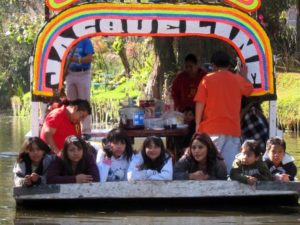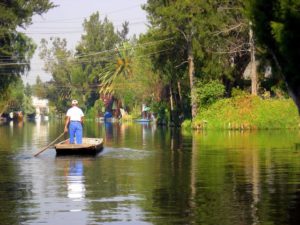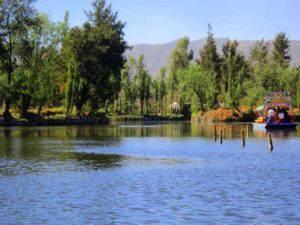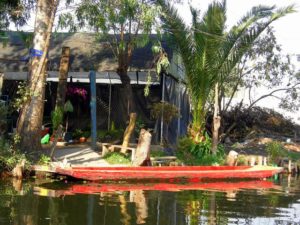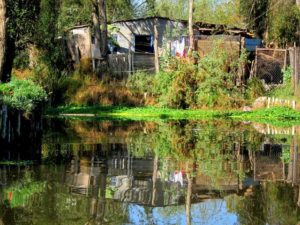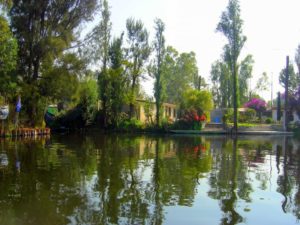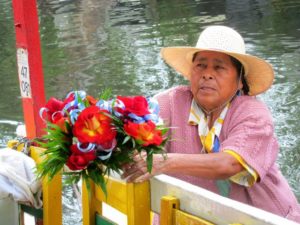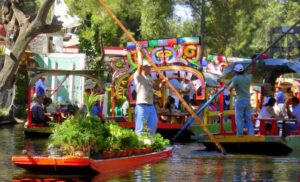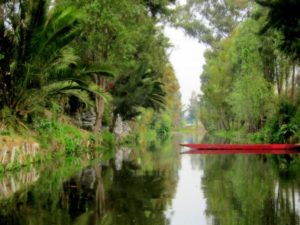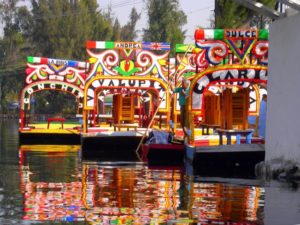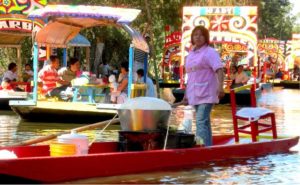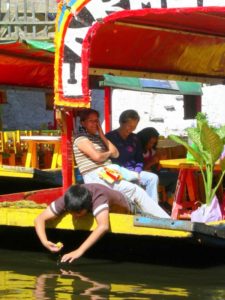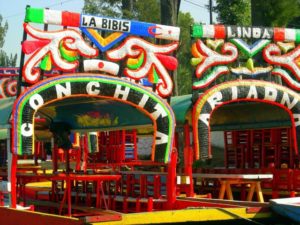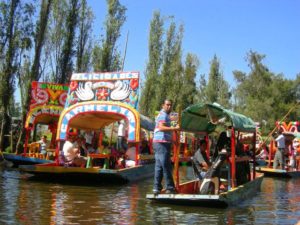For anyone planning on spending time in Mexico City, the Xochimilco Canals (pronounced: so-chee-MIL-ko) is an experience not to be missed. After a first glance in any guide book, the traveller would be forgiven for dismissing Xochimilco, expecting it to be a little garish perhaps, probably overrun with tourists; a place relegated to the bottom of the to-do list — if indeed it makes the list at all.
But like a slightly down-at-the-heels but once-regal dowager, these ancient waterways connect the visitor to a long ago glorious past, and what is left of these canals manages to exist today in a tenuous yet remarkable state of grace.
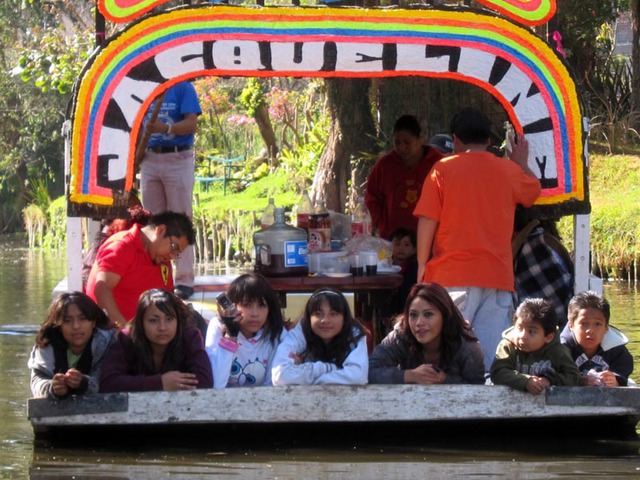
Just an hour south from Mexico City’s historical centre (by taxi or the Metro), the canals are a system of waterways and chinampas (man-made islands) that date back to pre-Hispanic times when barges and boats transported crops and goods from the farming communities on the chinampas to the city’s centre. As a stopover for travellers and as an important economic link, the canals of Xochimilco were a key component during the days of the Aztec Empire. Five hundred years ago, there were 750 kilometers of canals and 170 kilometers of chinampas. Today the canals measure 170 kilometers and there are 25 kilometers of chinampas. Though Xochimilco was declared a UNESCO World Heritage site in 1987, with environmental degradation, slow urbanization (much of it through illegal settlements) and dropping water tables, what is left of the canals is fast disappearing.
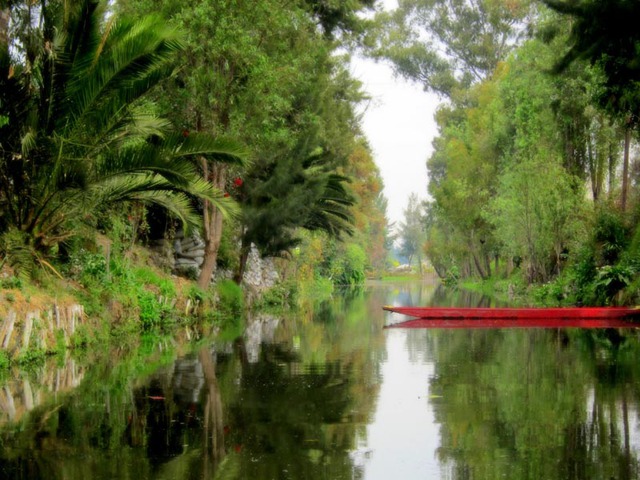
Visitors can hire boats at any of nine docks, or embarcaderos, and each canal offers a different experience, from vistas of farms and fields and the distant mountains that ring the valley in which Mexico City rests, to shoreline flower gardens and nurseries and shrines to the Virgen de Guadalupe.
And you can choose your adventure. If you visit Xochimilco on a Sunday, you can be part of a floating celebration to rival bumper cars at an amusement park, with hundreds of Mexican families dancing and singing to the music of mariachis as they celebrate a child’s birthday, a wedding, a birth. Food boats pull alongside. Tamales are lifted out of steaming pots, Coca-Colas and Squirt pulled from buckets of ice. Boats filled with crafts and jewellery, rugs and flowers drift nearby. The ambience on the canals on any given Sunday is of one huge Mexican party to which everyone is invited.
But if you visit the canals on a Monday morning, the cool waterways in the early mist may belong only to you and your lone gondolier. Because this is also a working river, you may see women planting their gardens in the early morning sun, and men poling heaps of hay and bamboo down the canal. You may be visited by herons, egrets, ducks and geese, and the only sound is the soft splash of the pole as it touches the water, and the chorus of birds nesting in the forest of ahuejote junipers.
The colourful wooden boats (called trajineras), which, decades ago, were festooned with arches of fresh flowers and sweeping branches of junipers, are now decorated with brightly painted flowered wooden arches, each one with a woman’s name — Maria Isabel; Carmelita, Lupita.
Floating down the Xochimilco Canals past the waterfalls and sharp-eyed egrets on a rock, alongside the vines of mistletoe, trumpeting lilies the color of the sun, masses of purple and pink bougainvillea and surrounded by only the sound of birdsong and soft pole splash, it’s difficult to remember that you’re just an hour away from one of the biggest cities in the world.
Xochimilco. The Nahuatl word for “place of flowers.” Put it on your list. You won’t regret it.

